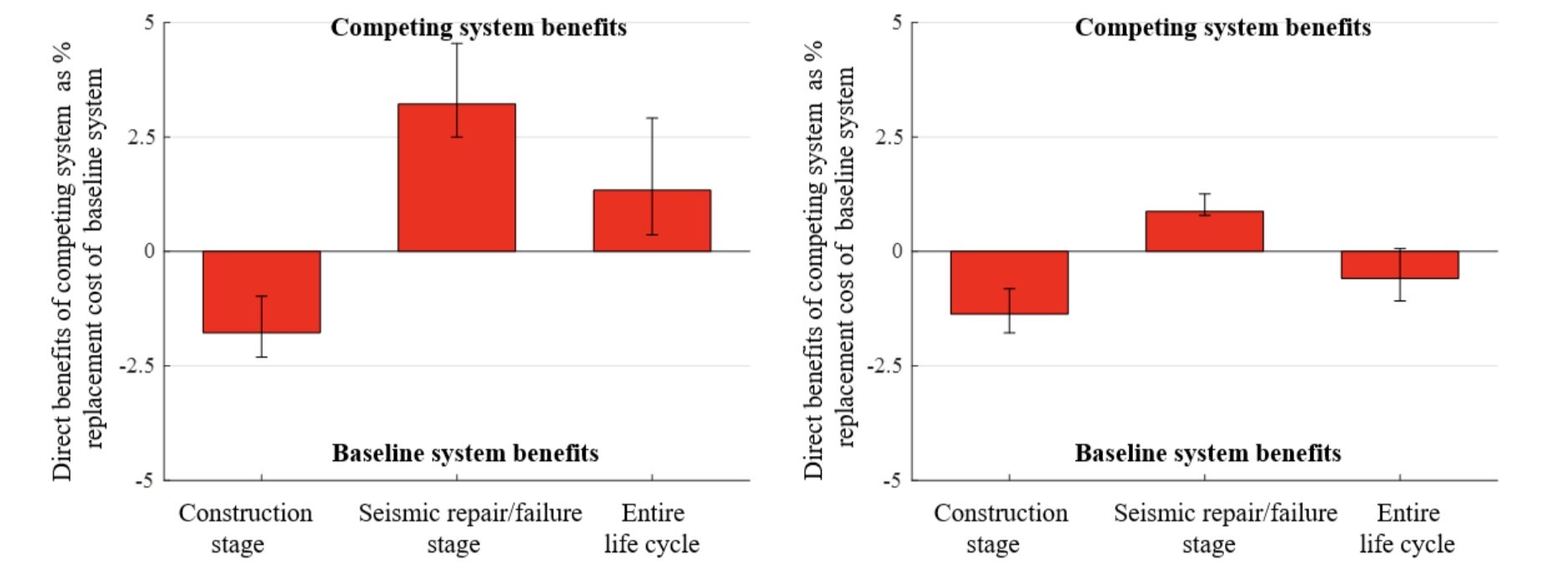We’ve had a number of papers recently accepted. I’ve posted abstracts and the manuscripts here, before they appear online.
Life-Cycle Cost Assessment of Conventional and Hybrid Sliding-Rocking Bridges in Seismic Areas
Authors: Jakub Valigura, Abbie Liel and Petros Sideris
This paper investigates the impacts of the column system on bridge life-cycle costs in high seismic areas. It focuses on hybrid sliding-rocking (HSR) columns, which are an accelerated bridge construction (ABC) technology. The authors conduct a life-cycle cost assessment, quantifying costs of bridge construction and potential earthquake damage and subsequent repairs, as well as the cost of bridge closure time due to construction or repairs. Two prototypical modern seismically-designed bridges are considered, each designed with both conventional RC and HSR columns. Construction costs of HSR columns are higher. However, drift demands on the HSR columns are generally lower, damage is less severe and costs of repairing the columns are greatly reduced. Moreover, construction times are about 80% quicker for HSR columns, and repair times are reduced relative to conventional construction. The results suggest advantages in most cases to the HSR column system, reducing construction time and expected costs and time for seismic repairs sufficiently to counteract the increase in upfront construction costs. The benefits of the HSR, and by extension other ABC column systems, are particularly significant for highly trafficked bridges in high seismic areas, but hold for a wide range of input assumptions.
The paper will be published in Structure and Infrastructure Engineering.
Please contact Jakub Valigura with questions.
Median benefits of competing system in terms of direct costs over construction, seismic repair/failure stages and entire life cycle for two prototype bridges.
Magnitude Thresholds and Spatial Footprints of Damage from Induced Earthquakes
Authors: Bridger Baird, Abbie Liel and Robert Chase
The rise in the number of anthropogenic small to moderate magnitude earthquakes in the central United States raises questions about the damageability of the built environment in such events. This study examines the performance of modern light-frame wood buildings, including single, multi-family and commercial construction, in earthquakes with moment magnitude of 3 to 6, using dynamic analysis of buildings models subjected to ground motions recorded in past induced events in North America. We focus on first onset of damage, e.g., wallboard or wallpaper cracking, nails popping out. The results show that earthquakes with magnitude less than 4-4.25 are unlikely to cause damage to modern construction. However, moderate magnitude events can cause damage over a wide geographic area (more than 30 miles from the earthquake epicenter, or 40 or more miles from a wastewater injection well). These results can be used to suggest setback distances between injection wells and certain neighborhoods or facilities, and magnitude thresholds for post-earthquake inspections.
The paper will be published in Earthquake Spectra.
Please contact Abbie Liel with questions.
Spatial footprint of damage from an injection site in (a) assuming an earthquake may occur up to 12 miles from the well for damage threshold B, and (b) assuming an earthquake occurs up to 3 miles from the well for damage threshold B and C.
In-Ground Gravel-Rubber Panel Walls to Mitigate and Base Isolate Shallow-Founded Structures on Liquefiable Ground
Authors: Balaji Paramasivam, Shideh Dashti and Abbie Liel
The effectiveness of a new liquefaction mitigation strategy is investigated experimentally for newly constructed shallow-founded structures: an in-ground gravel-rubber (GR) panel wall system. The goal was to limit the negative consequences of liquefaction in terms of permanent seismic deformation, while benefitting from the positive consequences of liquefaction in terms of base isolation. The influence of GRs was systematically evaluated on the seismic performance of a layered liquefiable deposit in the far-field and near two different model structures. The structures represented the key properties of a 3-story building (A) on a 1 m-thick mat foundation and a 9-story building (B) with a 1-story basement. The performance of Structure A with GRs was also compared with a similar structure without mitigation and with conventional mitigation strategies that either enhanced drainage alone (e.g., prefabricated vertical drains) or increased shear stiffness around the foundation’s perimeter (e.g., structural walls). Test results showed that the GR wall system could greatly improve the overall seismic performance of short-period structures like A, but may be detrimental to long-period structures like B. The GRs below Structure A effectively isolated the total system, reducing average and differential settlements below the foundation (although not necessarily to acceptable levels), while also reducing the seismic demand transferred to the superstructure, a combination rarely observed by conventional mitigation strategies. The same GR system under Structure B experienced greater seismic moments and shear stress, inducing large shear deformations in soil that led to this structure’s significant rotation and flexural deflection. The foundation continued to rotate even after shaking due to P-Δ effects, resulting in its overturning failure. These results show that GR systems can be quite effective for low-rise structures, but additional reinforcement may be necessary to reduce foundation tilt. Use of such mitigation measures under taller and heavier structures must be accompanied with great caution. Despite their practical limitations, evaluation of GR panel walls may guide future developments of combined, economical, and sustainable mitigation strategies that improve the overall performance of the soil-structure system.
This paper will be published in the Journal of Geotechnical and Geoenvironmental Engineering.
Time histories of foundation settlement and rotation for all structures. Settlements and rotations of BGR during Joshua-H are shown up to 12 s, at which time overturning failure occurred in this structure. The foundation rotation scale in figures c and d is different between -0.01 to 0.03 and 0.03 to 0.07.


